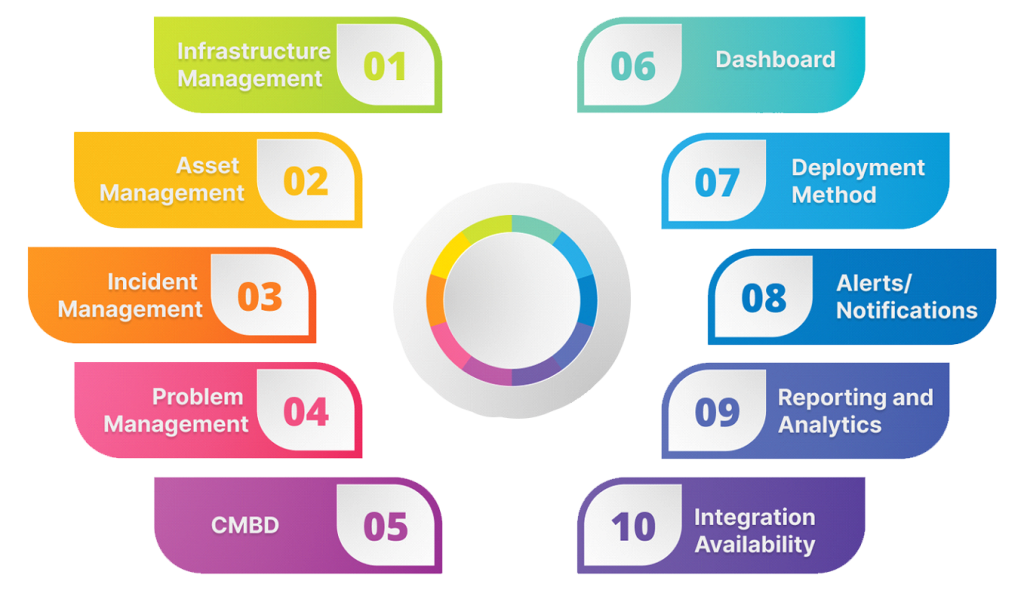SAP, ServiceNow, and Salesforce Cloud Service Consulting Company | LMTEQ
- Home
- SAP
- Salesforce
- ServiceNow
- Snowflake
- Microsoft
- NetSuite
- Industries
- Company
- Resources
- Contact
Amidst the incessant flux of the modern business landscape, organizations are tirelessly searching for methods to optimize and streamline their operational workflows. One potent solution that has gained widespread recognition is the implementation of ServiceNow, a versatile platform meticulously designed to automate and create various intricate business processes. ServiceNow Implementation services offer many advantages, such as enhanced IT Service Management (ITSM) and the automation of complex workflows. However, understanding these benefits is contingent upon the stringent adherence to a set of imperative technical service requirements. In this technical exposition, let’s highlight the eight pivotal ServiceNow Implementation service requirements, elucidating the crucial role of each element in the complex technological landscape.
Comparison Between the ServiceNow DCSM and Standalone Data Center Solution
For this comprehensive comparison, we will take a deeper look at both ServiceNow and other DCIM solution features predominantly and how they differ from one another.

Infrastructure Management
-
ServiceNow DCSM
Ideal for IT service management (ITSM) scope, ServiceNow can be leveraged to be integrated with the existing data center infrastructure monitoring tools, such as Building Management System (BMS) and Access Control System, and help to gain enhanced visibility in near-real time. ServiceNow DCSM can offer a single source of truth and improve overall efficiency by eliminating disparate systems to gain information about the data center infrastructure.
-
Standalone Data Center Solution
The standalone DCIM solution has various systems for maintaining data center infrastructure but heavily suffers from its inadequate integration functionality. This complicates data center maintenance, necessitating separate systems for monitoring various components, and ultimately reduces efficiency.
Asset Management
-
ServiceNow DCSM
Integrating with ServiceNow DCSM facilitates effortless tracking, management, and monitoring of physical and virtual assets, including racks, UPS units, and software licenses. It provides near-real-time visibility into them within its Configuration Management Database (CMDB). Through an automated discovery and advanced asset tagging system, ServiceNow DCSM creates a comprehensive IT inventory and enables better asset lifecycle management.
-
Standalone Data Center Solution
Even though the current DCIM solution has an asset management system, it often relies heavily on manual data entry for asset tagging, introducing a significant risk of errors that could disrupt data center operations irreparably. Moreover, with an outdated tagging system, it may need help to adapt to the rapid pace of change within the dynamic data center environment.
Incident Management
-
ServiceNow DCSM
By integrating with ServiceNow DCSM, the data center can use the Incident Management process to create a centralized system for logging, tracking, and managing incidents across the facility. This allows for proactive resolution and enables setting resolution targets based on priority to minimize downtime.
-
Standalone Data Center Solution
The current DCIM solution again lacks integration with ITSM tools, hindering incident management in the data center. Additionally, the absence of a robust mechanism for prioritizing incidents based on severity and impact hampers efficient resource allocation and timely incident resolution.
Problem Management
-
ServiceNow DCSM
Through integration with ServiceNow DCSM, data centers can utilize proactive problem management processes to identify and address issues efficiently. This includes performing root cause analysis to prevent the recurrence of problems in the future.
-
Standalone Data Center Solution
Standalone data center solutions may have an infrastructure management module, but the complexity comes from compatibility issues. Incompatibilities between systems, data format discrepancies, and integration complexities may hinder seamless data exchange and workflow automation, leading to inefficiencies in problem-resolution processes.
CMDB
-
ServiceNow DCSM
With ServiceNow DCSM, the data center can leverage a customized CMDB for lifecycle management, visualize component impact, monitor aging, implement version control for Configuration Items, and ensure seamless adaptability to evolving operational needs.
-
Standalone Data Center Solution
The DCIM solution has a database with all the information about the data center assets, but the major drawback here compared to the ServiceNow DCSM is the absence of capacity planning and the ability to run multiple simulations about future requirements (trend analysis).
Dashboard
-
ServiceNow DCSM
ServiceNow DCSM offers several key features, including a centralized metrics view covering capacity and consumption, a customizable KPI dashboard, capacity planning functionality, role-based incident tracking, and vendor monitoring within a tailored ServiceNow dashboard.
-
Standalone Data Center Solution
The standalone data center solution is equipped with a plethora of dashboards that help to gain visibility of infrastructure. Still, these dashboards are scattered across the different systems, making it difficult to track information and make a data-driven decision.
Deployment Method
-
ServiceNow DCSM
ServiceNow DCSM offers flexible deployment options to suit diverse user needs. Whether deploying via Cloud, SaaS, or web-based platforms, utilizing desktop versions on Mac or Windows, or accessing on-the-go through Android, iPhone, or iPad, it guarantees consistent and reliable performance across all deployment methods.
-
Standalone Data Center Solution
The standalone data center solution does have a handful of deployment options such as cloud, SaaS, and web-based platforms. And on top of that the solution utilizes a desktop version of Windows for the deployment. But the disadvantage is the accessibility. This limitation may restrict accessibility and flexibility for users who prefer or require deployment on Mac or mobile devices, thus potentially hindering their ability to manage data center infrastructure while on the go effectively.
Alerts/Notifications
-
ServiceNow DCSM
ServiceNow DCSM offers a real-time alert and event ticketing feature, which automatically generates tickets for alerts or events, improving response times and operational efficiency. On top of that, it can help to prompt action by assigning tickets to appropriate technical teams.
-
Standalone Data Center Solution
The standalone data center solution offers basic alerts and notifications to enhance operational awareness. However, its limited visibility renders DCSM a more advantageous option. Additionally, the absence of automation necessitates manual intervention, resulting in slower responses to critical events.
Reporting and Analytics
-
ServiceNow DCSM
With ServiceNow DCSM, the data center can obtain shift-wise reports and trend analyses, as well as discrepancy reports regarding component availability, customer satisfaction, and survey feedback. This comprehensive suite of features facilitates accurate decision-making, enhances operational efficiency, and promotes proactive management strategies.
-
Standalone Data Center Solution
The standalone data center solution provides pre-configured reports that offer a convenient overview of the data center infrastructure's status. However, when conducting thorough analyses, the solution may lack the necessary features, thus making operational management and decision-making more challenging.
Integration Availability
-
ServiceNow DCSM
With over 400 integration options available, ServiceNow DCSM emerges as an ideal solution for data centers seeking seamless integration with various tools and platforms. These integrations span a wide range of functions, including monitoring, automation, ticketing systems, and asset management, empowering data center operators to streamline processes, enhance efficiency, and maximize the value of their infrastructure investments.
-
Standalone Data Center Solution
The standalone data center solution can be integrated with the ITSM software for better operational efficiency and reliability. However, the drawback comes in the form of the number of integrations available and the compatibility of those integrations, which may require additional resources for customization and maintenance, potentially leading to increased complexity and costs.
Key Takeaway
Instead of implementing different systems to maintain and monitor your data center, ServiceNow DCSM can give you a holistic view of your data center infrastructure including the core components such as space, power, rack, network, and environment. On top of that, it also assists you in service management such as incidents, changes, and more, and helps you visualize the operations and assist you in increasing the data center efficiency.
LMTEQ team assists you in integrating the ServiceNow DCSM into your data center infrastructure management system and helps you visualize and streamline your data center operations.

Request for a Call Back
Ready to harness the true potential of your Data Center with LMTEQ’s ServiceNow DCSM? Let’s Talk
